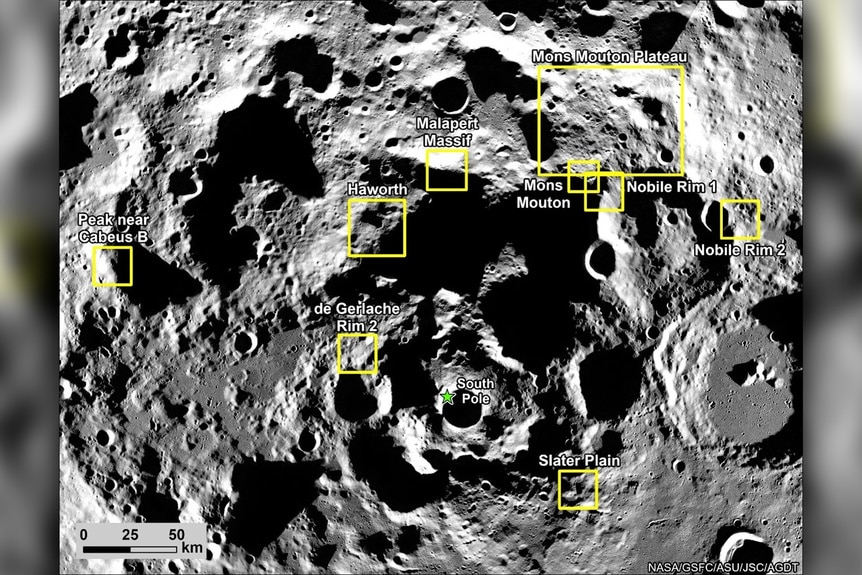Create a free profile to get unlimited access to exclusive videos, sweepstakes, and more!
Artemis III Update: NASA Announces 9 Potential Sites for Upcoming Lunar Landing Mission
We're going back to the Moon and now we know, sort of, where we're going.

SYFY’s The Ark takes the evolution of space exploration to its logical extreme: an interstellar mission to another star system. The audience enters the story midway through a one-way journey to Proxima centauri b, a rocky exoplanet roughly 4.2 light-years from here.
Whether humanity ever becomes an interplanetary or interstellar species remains to be seen, but we’re preparing to take the next step by returning to the Moon and establishing a permanent presence there. NASA’s uncrewed Artemis I mission is already in the can, and the Artemis II crewed mission to lunar orbit is coming down the track. Next on the docket will be Artemis III, the first crewed landing mission in more than 50 years.
Before astronauts can set foot at the lunar South Pole, NASA has to decide where they’re going. To that end, the agency recently announced a collection of nine candidate regions near the Moon's South Pole where Artemis III astronauts might touch down.
Check out the candidate landing sites for NASA’s Artemis III lunar landing mission
The names of the candidate regions are Peak near Cabeus B, Haworth, Malapert Massif, Mons Mouton Plateau, Mons Mouton, Nobile Rim 1, Nobile Rim 2, de Gerlache Rim 2, and Slater Plain. These nine regions will be further investigated to winnow them down to a final Moon landing destination. Any site not chosen for Artemis III could become a landing site for a future lunar mission. Meanwhile, NASA is continuing to look for additional candidate sites.
“The Moon’s South Pole is a completely different environment than where we landed during the Apollo missions,” said Sarah Noble, Artemis lunar science lead at NASA Headquarters in Washington, in a statement. “It offers access to some of the Moon’s oldest terrain, as well as cold, shadowed regions that may contain water and other compounds. Any of these landing regions will enable us to do amazing science and make new discoveries.”
The candidate regions were selected by a multidisciplinary team of scientists and engineers, using data from the Lunar Reconnaissance Orbiter (LRO) and decades of lunar research. Each of the candidate sites exhibits diverse geological characteristics and access to permanently shadowed regions where scientists believe water ice is safely nestled.
“Artemis III will be the first time that astronauts will land in the south polar region of the Moon. They will be flying on a new lander into a terrain that is unique from our past Apollo experience,” said Jacob Bleacher, NASA’s chief exploration scientist. “Finding the right locations for this historic moment begins with identifying safe places for this first landing, and then trying to match that with opportunities for science from this new place on the Moon.”
Over the coming months, we should expect these candidates to be narrowed down. In part, the selection will depend on a precise launch window, because some of the sites are only accessible during certain times. At present, Artemis II is planned for September 2025 and Artemis III for a year later.
In the meantime, catch up on SYFY's The Ark, now streaming on Peacock.































